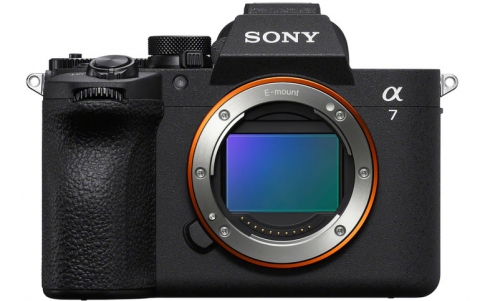
Intel: Future Ultrabooks To Respond To Gestures, Voices
Intel is trying to make its biggest marketing push for a the super-thin ultrabooks and plans to bring a multi-language, natural voice experience for these devices.
Hoping to fend off major strides made by Apple and its MacBook Air into the high-end personal computing market, Intel kicks off CES 2012 by describing "a new era of computing experience " that is underway, as the first wave of Ultrabook devices come to market.
Leading the event were Mooly Eden, Intel vice president and general manager, PC Client Group, and Kevin Sellers, vice president, Sales and Marketing Group and director, Advertising and Digital Marketing.
Intel's executives said that more than 75 Ultrabook designs are in the pipeline for 2012 and will come in a variety of screen sizes (including 14- and 15-inch), shapes and styles. The second phase of Ultrabook devices will be powered by the upcoming 3rd generation Intel Core processor family, initially available in systems starting in the spring and with increasing availability through the year.
During his presentation, Eden demonstrated several Ultrabook experiences and no-compromise usages that take advantage of the computing performance of the Ultrabook.
As the Ultrabook continues to evolve, so too will the way people interact with them, as touch-based experiences are added, according to Intel. Eden said the addition of the touch experience will also fuel innovation in the design and shape of future Ultrabook systems, from clamshells and hybrids, to convertibles and other styles likely not yet imagined.
An innovative concept system developed by Intel includes a clear panel at the base of the keyboard that serves as a touch pad when open in clamshell mode, but transforms into a touch-enabled display when closed for quick use on-the-go.
Intel plans to add capabilities that will let people engage naturally and intuitively with an Ultrabook. Eden announced a strategic relationship between Intel and Nuance Communications, Inc., a provider of voice and language solutions, to develop an intuitive, multi-language, natural voice experience for these devices. The experience will be based on Nuance's Dragon voice recognition technology that will be optimized for Intel architecture and is expected to be available this year. Using this technology, people will be able to control their Ultrabook just by using their voice, from quickly and easily launching applications, playing media, checking and updating social media sites or controlling their email and calendar.
A software development kit for Dragon and other Nuance technologies will be available on the Intel AppUp Center, Intel added.
Intel is also working on the next generation of computing interaction: short-range gesture recognition. Eden gave a sneak peek of some of the progress made thus far using a slingshot game controlled by the user's natural gestures.
Safer Computing
Intel is also applying its latest security technology solutions to make computing safer. Intel Identity Protection technology and Intel Anti-Theft technology come pre-installed on Intel Ultrabook devices.
With Intel Identity Protection technology, a payments processor, bank, online merchant, social media site or gaming site can establish a trusted relationship with a consumer's Ultrabook and make the consumer transaction safer from fraud and malware, thus more effectively safeguarding the user's privacy.
Intel Identity Protection technology provides a powerful set of authentication building blocks for Internet-based services. It uses strong two-factor authentication, chip-level authentication similar to hardware tokens and hardware-based display protection.
In 2012 and moving forward, a key effort for Intel is to work with authentication partners to launch Intel Identity Protection Technology-enabled solutions for Ultrabooks and work with the ecosystem - including online banking, gaming, e-commerce and social media sites - to enable them to leverage Intel Identity Protection technology safeguards for customers who use their Internet-based services from an Ultrabook device.
Intel Anti-Theft technology helps deter data and asset theft. If a user?s Ultrabook is stolen, it can be disabled automatically or the consumer can notify the service provider to disable the system. If the Ultrabook is found intact, the provider can re-enable the system.
In the second half of 2012 with the introduction of Ultrabook devices powered by third generation Intel Core processors, all Ultrabook customers worldwide will have Intel Anti-Theft technology available to them through local software providers including Absolute, McAfee, StarSoftComm and OneBe.
Intel acquired McAfee in 2011. The first fruit of the Intel-McAfee partnership is the jointly developed McAfee DeepSAFE technology. DeepSAFE leverages hardware-based capabilities built into Intel Core i3, i5 and i7 processors that power Ultrabook devices to enable a new vantage point on security. A new software layer that sits below the operating system, it provides a direct view into system memory and processor activity. Hardware-assisted security products built on this platform can employ new techniques to detect infections and prevent malicious activity. The combined companies are also collaborating to deliver robust anti-theft capabilities to Ultrabook devices that provide users a hardware-assisted means to protect their information should their Ultrabook be lost or stolen.
Intel also has a long history of working with Microsoft to enhance the security of Intel-based platforms running Windows. Most recently, this work has focused on improvements designed to secure the boot operation of devices in conjunction with the pending launch of the Windows 8 operating system.
Leading the event were Mooly Eden, Intel vice president and general manager, PC Client Group, and Kevin Sellers, vice president, Sales and Marketing Group and director, Advertising and Digital Marketing.
Intel's executives said that more than 75 Ultrabook designs are in the pipeline for 2012 and will come in a variety of screen sizes (including 14- and 15-inch), shapes and styles. The second phase of Ultrabook devices will be powered by the upcoming 3rd generation Intel Core processor family, initially available in systems starting in the spring and with increasing availability through the year.
During his presentation, Eden demonstrated several Ultrabook experiences and no-compromise usages that take advantage of the computing performance of the Ultrabook.
As the Ultrabook continues to evolve, so too will the way people interact with them, as touch-based experiences are added, according to Intel. Eden said the addition of the touch experience will also fuel innovation in the design and shape of future Ultrabook systems, from clamshells and hybrids, to convertibles and other styles likely not yet imagined.
An innovative concept system developed by Intel includes a clear panel at the base of the keyboard that serves as a touch pad when open in clamshell mode, but transforms into a touch-enabled display when closed for quick use on-the-go.
Intel plans to add capabilities that will let people engage naturally and intuitively with an Ultrabook. Eden announced a strategic relationship between Intel and Nuance Communications, Inc., a provider of voice and language solutions, to develop an intuitive, multi-language, natural voice experience for these devices. The experience will be based on Nuance's Dragon voice recognition technology that will be optimized for Intel architecture and is expected to be available this year. Using this technology, people will be able to control their Ultrabook just by using their voice, from quickly and easily launching applications, playing media, checking and updating social media sites or controlling their email and calendar.
A software development kit for Dragon and other Nuance technologies will be available on the Intel AppUp Center, Intel added.
Intel is also working on the next generation of computing interaction: short-range gesture recognition. Eden gave a sneak peek of some of the progress made thus far using a slingshot game controlled by the user's natural gestures.
Safer Computing
Intel is also applying its latest security technology solutions to make computing safer. Intel Identity Protection technology and Intel Anti-Theft technology come pre-installed on Intel Ultrabook devices.
With Intel Identity Protection technology, a payments processor, bank, online merchant, social media site or gaming site can establish a trusted relationship with a consumer's Ultrabook and make the consumer transaction safer from fraud and malware, thus more effectively safeguarding the user's privacy.
Intel Identity Protection technology provides a powerful set of authentication building blocks for Internet-based services. It uses strong two-factor authentication, chip-level authentication similar to hardware tokens and hardware-based display protection.
In 2012 and moving forward, a key effort for Intel is to work with authentication partners to launch Intel Identity Protection Technology-enabled solutions for Ultrabooks and work with the ecosystem - including online banking, gaming, e-commerce and social media sites - to enable them to leverage Intel Identity Protection technology safeguards for customers who use their Internet-based services from an Ultrabook device.
Intel Anti-Theft technology helps deter data and asset theft. If a user?s Ultrabook is stolen, it can be disabled automatically or the consumer can notify the service provider to disable the system. If the Ultrabook is found intact, the provider can re-enable the system.
In the second half of 2012 with the introduction of Ultrabook devices powered by third generation Intel Core processors, all Ultrabook customers worldwide will have Intel Anti-Theft technology available to them through local software providers including Absolute, McAfee, StarSoftComm and OneBe.
Intel acquired McAfee in 2011. The first fruit of the Intel-McAfee partnership is the jointly developed McAfee DeepSAFE technology. DeepSAFE leverages hardware-based capabilities built into Intel Core i3, i5 and i7 processors that power Ultrabook devices to enable a new vantage point on security. A new software layer that sits below the operating system, it provides a direct view into system memory and processor activity. Hardware-assisted security products built on this platform can employ new techniques to detect infections and prevent malicious activity. The combined companies are also collaborating to deliver robust anti-theft capabilities to Ultrabook devices that provide users a hardware-assisted means to protect their information should their Ultrabook be lost or stolen.
Intel also has a long history of working with Microsoft to enhance the security of Intel-based platforms running Windows. Most recently, this work has focused on improvements designed to secure the boot operation of devices in conjunction with the pending launch of the Windows 8 operating system.




















